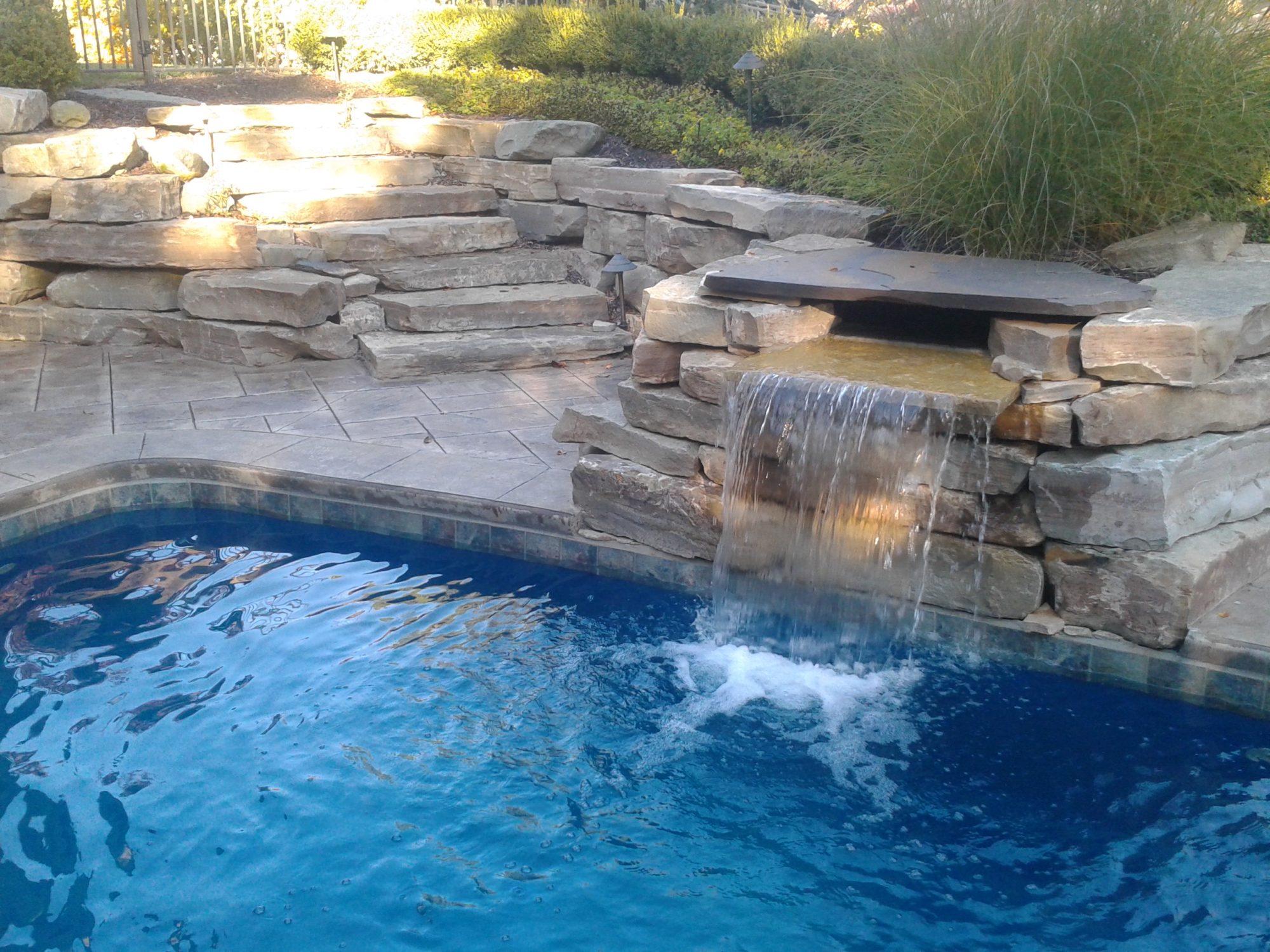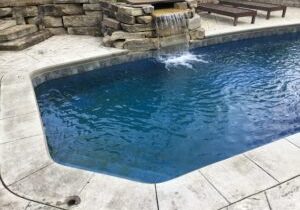2-26-2025..If you think that Salt Water in Fiberglass Swimming pools is Chlorine Free....--
Think Again!
All Salt water In ground Vinyl
Liner or Fiberglass
swimming pools use a "Salt to Chlorine Generator" to
create Chlorine from Salt!

Salt generators for Thursday fiberglass inground fiberglass swimming pools basically produce chlorine from salt. Salt is sodium/chloride. A salt generator uses between 500 to 1500 watts of A/C power to split the salt crystal. The energy consumption is like running a hair dryer for 8 to 12 hours. The result of this process is a sodium based Thursday fiberglass swimming pool (salt water) and chloride.
Chloride is the gaseous form of Chlorine (the liquid). Since Chloride is the gaseous form of Chlorine (the liquid) it wants to evaporate out. You need the add water stabilizer to keep the chloride in the fiberglass swimming pool to sanitize. The only water stabilizer you can use is "Cyanuric acid" which is chemically similar to Cyanide.
If your objective was to have a NON Chlorine Vinyl Liner
Swimming Pool, well, you don't.
While salt generators require that you purchase salt instead of chlorine, you are still
swimming in chlorine.
You will need to add 1 teaspoon of salt per one gallon of water.
On an average size inground fiberglass swimming pool that's
15,000 teaspoons of SALT !!
You will experience all of the problems you will experience
swimming in a chlorine inground swimming pool.
Salt generators are expensive devices and consume a lot of electrical current. Salt generators are also very corrosive and the generator chamber has a limited life and is very expensive to replace, sometimes more than 1/2 the cost of the original system and that is if the Company you buy it from is still in business.
In 2001 there were 65 manufactures of Salt to Chlorine Generators. As of 2010 there are only 20 or so left.
Do your own research regarding salt water and concrete surfaces, and the average lifetime of a salt cell. Also check with your inground pool equipment manufactures to make sure that adding a salt system does not void your warranty. Almost all inground fiberglass swimming pool cover companies, pool heating companies, and a growing number of pump and filter manufactures are voiding warranties if their products are used on a salt water fiberglass swimming pools because of the damage caused by salt.
Why CL Free Vinyl Liner or Fiberglass swimming pools are preferred over Salt.
- Swimmers prefer the feel and taste of water treated with the CL Free Water System over water treated with salt-to-chlorine generators by an overwhelming margin.
- CL free systems work within a calcium hardness range of 200-400 ppm. Because it converts calcium to bicarbonate, we signifitaltly reduce calcium scaling on fiberglass swimming pool walls and rock features. Salt-to-chlorine generators do not control calcium scaling.
- Since salt-to-chlorine systems produce chlorine, the sanitizing effectiveness of the swimming pool system is impacted by changes in temperature, bather load, pH, sunlight and rainfall. Changes in any of these factors may require additional “shocking” of the water to prevent an algae outbreak. CL Free’s effectiveness is not significantly affected by these factors. There is always a Copper Ion residual in the Latham fiberglass Swimming Pool water. A CL Free owner does not have to be concerned about doing anything different to treat their pool if they have 20 kids in the fiberglass swimming pool all day.
- Inground Vinyl liners, automated fiberglass pool covers and solar covers may become damaged from the use of chlorine or salt-to-chlorine generators. Since the CL Free pool system does not require the use of harmful oxidizing chemicals, these expensive Latham fiberglass pool components can be expected to last their normal life expectancy. Many inground swimming pool cover company's now have a label affixed to their products saying the warranty will be void if it used on a Salt Water Latham Fiberglass Swimming Pool.
- Salt-to-chlorine generators will use an average of 500- 1500 watts of AC power, 8 to 12 hours a day, for a 20,000 gallon pool. CL Free systems will use an average of only 35-40 watts of DC power to treat the same amount of Vinyl liner swimming pool water.
- Salt-to-chlorine generators and the CL Free system both use a chamber in their process. The difference is that a salt-to-chlorine generator cell may need to be replaced in 1.5-2.5 years at a cost of over $500-$800 and needs to be cleaned several times a season. The copper Ion bars in the CL Free chamber cost around $75 to replace and they should last 2-3 years. The CL Free chamber is warranted for 5 years and should last indefinitely.

